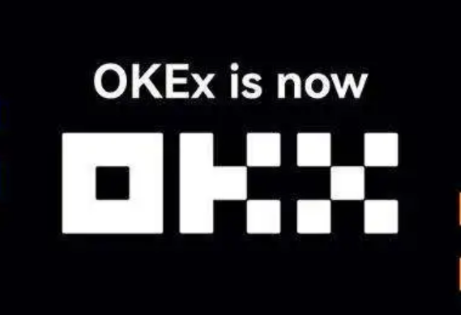刀片式服务器(刀片式服务器安装机柜方法)
欧易okx交易所下载
欧易交易所又称欧易OKX,是世界领先的数字资产交易所,主要面向全球用户提供比特币、莱特币、以太币等数字资产的现货和衍生品交易服务,通过使用区块链技术为全球交易者提供高级金融服务。
了解服务器硬件的主要类型和优缺点
Learn the major types of server hardware and their pros and cons
译 者 说
东数西算的数据存储和计算都要靠服务器?你真的知道数据中心里有哪些类型的服务器吗?
Robert Sheldon,23 Aug 2021
服务器承载应用程序,管理文档,处理邮件,流媒体和平台分析功能。企业和组织可以从服务器提供的能力和广泛用途中获益,但很难知道该选择哪一类服务器硬件。
Servers host applications, manage files, process emails, stream media and perform analytics. Any organization can benefit from the power and versatility that servers provide, but it can be difficult to know which types of server hardware to choose.
如今市面上可购买的服务器主要可以分成三种:机架式,刀片式和大型主机( 大型商用服务器 )。大部分的IT团队倾向机架式和刀片式服务器去满足其硬件需求。一些团队选取大型主机去处理其工作负载,往往并不是因为机架式和刀片式服务器不能胜任。
Today's servers are primarily available in three forms: racks, blades and mainframes. The majority of IT teams turn to rack and blade servers to meet their server requirements. Some teams opt for mainframe computers to handle their workloads, although not nearly to the extent of rack and blade servers.
这三种服务器都有其优劣势,采购方应该在决定前仔细权衡这些不同类型的服务器硬件。采购方无需限制只采购其中任意类型,然而企业和组织可以在预算和空间限制的前提下选择最适合他们工作负载的服务器。
Rack, blade and mainframe servers all have their advantages and disadvantages, and buyers should carefully weigh these different types of server hardware before deciding on a product. Buyers do not need to limit their selection to any one type, however. Organizations can choose what's best for the workloads they need to support with an eye on budget and space constraints.
什么是服务器
What is a server?
服务器是一种可以提供针对不同工作负载的计算处理和存储资源的计算机。服务器这个术语可以指代计算机本身或者一个提供服务的程序,例如一个邮件管理系统。大多数的服务器硬件指物理机器。服务器操作系统被设计用来处理大量工作负载,服务交付和支持基于网络的操作。常见的通用服务器操作系统包括Linux, Unix和Windows Server.
A server is a type of computer that provides processing and memory resources for different workloads. The term server can refer to the computer itself or to a program that delivers a service, such as an email management system. Most hardware-related references concern the physical machine. The server operating system (OS) is designed to process large workloads, deliver services and support network-based operations. Common server OSes include Linux, Unix and Windows Server.
服务器通常被设置用来提供一个或者多个特定的服务。服务器通常被用来管理网络资源和连接到客户端设备。一台服务器经常被指基于它所服务的目的。例如,一个打印服务器提供网络用户可以使用共享的打印机,一个流媒体服务器可以提供视频音频内容给网络用户。
Servers are usually set up to provide one or more specific services. Servers are commonly used to manage network resources and make them available to client devices. A server is often referenced to based on the purpose it serves. For example, a print server provides network users with access to shared printers, and a media server streams video and audio content to network users.
一台服务器的物理硬件配置通常取决于其提供服务的类别。举例,一个数据库服务器可能有更多计算处理和存储资源去处理并发事务的飙升。许多数据中心也会进行服务器的虚拟化以便更高效的交付服务。服务器虚拟化能更好的帮助利用服务器的物理资源,同时也会提高灵活性和安全性并且减少能源消耗。
A server's physical configuration is usually specific to the types of services it provides. For example, a database server might include more processing or memory resources to handle the influx of concurrent transactions. Many data centers also implement server virtualization to deliver services more efficiently. Server virtualization can help better utilize the server's physical resources, while also increasing flexibility and security and reducing energy consumption.
为什么购买服务器
Why purchase a server?
支撑大量用户的企业和组织能从不同类型的服务器硬件中获益。对于大多数组织而言,在处理业务和保护敏感资源时,服务器是必须要的。企业组织可能在当他们新建数据中心,扩展和更新已有数据中心,新增办事处和加速开发项目的时候购买服务器。
Any organization that supports more than a handful of users can benefit from different types of server hardware. For most organizations, servers are essential to carrying out business and protecting sensitive resources. Organizations might need to purchase servers when they set up new data centers, expand or update existing ones, open satellite offices, or spin up development projects.
虽然服务器增加了组织必须提供支持的计算机数量,但它们也能帮助整合资源;不同类型的服务器硬件使得网络用户能共享打印机、硬盘驱动器和应用程序。虽然用户能通过点对点网络共享资源,一台服务器更适合被配置通过网络管理那些重要资源和安全交付,尤其是有大量用户的情况下。
Although servers add to the number of computers that an organization must support, they can also help consolidate resources; different types of server hardware make it possible to share printers, disk drives and applications with network users. Although users can share resources across peer-to-peer networks, a server is much better equipped to manage those resources and deliver them securely across the network, especially with a large number of users.
这种服务器的使用方式也会因资源是中心化集中控制变得有更具生产力。这允许工作人员更好地与他们的同事共享数据。用户能在需要的时候接触到其所需资源而且无须担心管理问题。例如,他们不必在他们自己的电脑系统中保留拷贝复制、执行和维护备份或者管理相同数据的多份复制。
This use of servers can also lead to greater productivity because resources are centralized, which allows workers to easily share data with their colleagues. Users can access the resources they need when they need them without worrying about managing them. For example, they do not have to keep a copy of the data on their own systems, implement and maintain a backup, or manage multiple copies of the same data.
此外,服务器能让用户在远程接触到他们需要的应用和数据。这使得工作人员当在出差和远程工作的时候更易保持生产力。
In addition, servers enable users to access the applications and data they need from remote locations, which makes it easier for workers to stay productive when they travel or work remotely.
服务器也通过数据保护增加了商业价值,也提供必要的架构让管理员去控制文件、应用、外围设备和其他资源的权限。另外,管理员能控制服务器运行时的安全机制,通过集中监控系统应对安全及合规问题。
Servers also add business value via data protection, providing the structure necessary for admins to control which users can access files, applications, peripherals and other resources. In addition, admins can control the security mechanisms that they implement on the servers, as well as centrally monitor systems for issues related to security and compliance.
不同类型的服务器硬件也能更容易去备份系统和用户数据,以及执行灾难恢复策略。管理员也能更容易确保数据的可靠性和可用性,不管是通过群集化服务器或配置冗余部件。另外稳健的模型也使得中心化控制其他管理运营成为可能,例如维护工作站、控制域名和监控软件。
Different types of server hardware also make it easier to back up system and user data and implement disaster recovery strategies. Admins can also more easily ensure the reliability and availability of data, whether by clustering servers or building redundancies into system components. In addition, the consolidated model makes it possible to centralize other management operations, such as maintaining workstations, controlling domains and monitoring software.
因为服务器可以稳固资源,高效管理和提升生产力,他们最终能减少支出。另外他们的中心化管理能力使得更容易追踪应用的使用情况,以便更好控制许可证支出和避免昂贵的软件审计。
Because servers can consolidate resources, streamline management and increase productivity, they can ultimately reduce costs. In addition, their centralized management capabilities make it easier to track application usage to better control licensing costs and avoid expensive software audits.
因为服务器能更好地保护数据,更少可能被陷入风险,并且帮助避免高额罚款,有损声望以及避免随之而来的业务损失。
Because servers better protect the data, it is less likely to be compromised, helping to avoid costly fines, tarnished reputations and the lost business that comes with both of these.
机架式服务器
Rack servers
机架式服务器,顾名思义安装在机架上的服务器,是一个标准尺寸的计算机被设计安放在服务器机架上,与其他机架式服务器或者标准尺寸的设备如网络设备或存储区的网络设备一起。一台机架式服务器被认为是一个多用途的机器,能支持广泛的工作负载。
A rack server, also known as a rack-mounted server, is a standard-size computer designed to be mounted in a server rack along with other rack servers or standard-size components, such as network or storage area network devices. A rack server is considered to be a general-purpose machine that can support a wide range of workloads.
机架式服务器相比塔式服务器占用更少的空间是因为它们没有被包裹在大块头的机箱内,用户能将其与其他设备安装在一个机架内。另外因为供应商标准化了机架和机架服务器尺寸,如果其中一个设备部件发生故障,管理者能很容易增加或者替换服务器。这样的设计也容易去逐渐增加部件来支持增长的工作负载。最好之处在于,在同一个机架上的服务器不必是同一种类型或来自于同一家供应商。
Rack servers take up a lot less space than tower servers because they're not encased in bulky cabinets and users can stack them in a single rack along with the other components. In addition, because providers have standardized the size of racks and rack servers, admins can easily add or replace servers if one should malfunction. The design also makes it simple to add components gradually to accommodate growing workloads. Best of all, the servers in the same rack don't have to be the same model or come from the same vendor.
机架服务器中一个最大的挑战是管理所有把部件连接在一起的线缆。机架式服务器需要电力、网络、管理和存储的线缆。所有这些线缆安装在堆叠的设备后面,使得很难管理线缆和服务器。线缆也能影响冷却,机架式服务器通常安装的互相靠近,这进一步提出了挑战。
One of the biggest challenges with rack servers is managing all the cabling that ties the components together. Rack servers require cables for power, networking, management and storage, all of which hang off of the back of the stacked components, making it difficult to manage the cables and servers. The cables can also affect cooling, which is already challenging with rack servers because of their proximity to each other.
Blade servers
刀片服务器是一个模块化的部件 --刀片--可和其他刀片被放入一个服务器机箱。每一个刀片有自己的处理器、内存和集成的网络控制器。刀片可能也包括一个光纤通道主机总线适配器,还有其他I/O 端口。相比机架服务器,刀片服务器在一个更小的空间提供更多计算处理能力,有简化的布线结构。
A blade server is a modular component -- blade -- that fits into a server chassis along with other blades. Each blade has its own processors, memory and integrated network controllers. The blade might also include a Fibre Channel host bus adapter, as well as other I/O ports. Blade servers offer more processing power in a smaller space than rack servers while providing a simplified cabling structure.
因为在机箱中刀片式很紧凑的配置,这个机箱本身有时也被称作刀片服务器,同时单独的刀片被称作模块化主板或板卡,其实这些刀片自身就是服务器。这是因为机箱提供了稳定的资源诸如电力、冷却和网络。这些资源被共享然后连通到所有在里面的刀片服务器。管理员也能把机箱固定在一个标准尺寸的服务器机架上。
Because blades are so tightly configured within the chassis, the chassis itself is sometimes referred to as the blade server and the individual blades are called modular motherboards or circuit boards even though they're servers in their own right. This is because the chassis provides consolidated resources such as power, cooling and networking, which are shared across all the blades within the chassis. Admins can also mount the chassis on a standard-size server rack.
相比机架式服务器,刀片服务器其中一个最大的优势是它能在一个更小的空间里提供更多的计算处理密度。这使刀片服务器有更好的性价比优势,即便刀片服务器比机架服务器更贵。高效的空间使用可增加冗余去更好地确保应用程序及数据的可靠性和可用性。
One of the biggest advantages of a blade server compared to a rack server is its ability to provide greater processing density within a smaller space. This can result in a price-to-performance advantage even though blade servers are themselves more expensive than rack servers. This efficient use of space can increase redundancy to better ensure the reliability and availability of applications and data.
另外,刀片和机箱部件是可以热交换的,包括冷却系统,控制器和交换机。由于机箱的结构,相比机架服务器布线更加容易。刀片系统也提供了一个中心化的管理控制台去控制和监控系统的部件。
In addition, the blades and chassis components are hot-swappable, including the cooling system, controllers and switches. Plus, because of the chassis structure, cabling is simpler when compared to the rack server. The blade system also provides a centralized management console to control and monitor the system's components.
虽然刀片服务器提供先进的计算能力,也会伴随一些缺点,例如,服务器机箱和刀片的架构是专用的,这使得供应商限制了更多的可能性,这个专用机型自己也会因供应商不再发布新品或者未能及时更新部件,从而限制了升级。
Although blade servers offer state-of-the-art computing capabilities, they also come with a few drawbacks. For example, the server chassis and blade architecture are proprietary, which makes vendor lock-in a strong possibility. This proprietary nature can also limit upgrade options if the vendor does not release new or updated components in a timely manner.
虽然刀片服务器比机架服务器更贵,在特定场景下节省了空间、电力以及管理成本上弥补费用。但机架服务器提供一个更低的准入费用,这能满足一个组织循序渐进业务增长的需求。对于刀片服务器,企业和组织可能需要去对数据中心进行整改以适配电力和冷却的需要。
Although blade servers are more expensive than rack servers, savings in space, power and management can offset expenses under the right circumstances. However, the rack server provides a lower entry cost, which can be an advantage to an organization that wants to start out small and work its way up gradually. Also, with blade servers, an organization might need to update its data center to accommodate power and cooling needs.
尽管有这些顾虑之处,一个刀片服务器能成为特定场景的一个合适选项,尤其适合在空间受限的高密度服务器机房的数据中心里。刀片服务器很适合一个需要服务器集群的单独任务如文件共享、网页主机、流媒体、数据库管理和虚拟桌面基础设施。
Despite these concerns, a blade server can be a good fit in a number of circumstances, particularly for data centers with high-density server rooms in which space is limited. Blade servers are well-suited to a single task that requires clustered servers, such as file sharing, web hosting, video streaming, database management or virtual desktop infrastructure.
大型主机
Mainframe servers
大型主机是一个特别强大的计算机;尺寸像一个大的冰箱。不像它以前能够占满整个房间的样子,如今的大型机更加紧凑和功能强大,包括非常复杂的加密能力以及多层级冗余。大型机仍然在体积上比机架式和刀片式服务器大很多,价格也贵很多。然而大型机也比它们功能更加强大和可靠。
A mainframe server is an extremely powerful computer; it's about the size of a large refrigerator. Unlike its predecessors, which could take up an entire room, today's mainframes are much more compact and powerful and include sophisticated encryptioncapabilities, as well as multiple layers of redundancy. Mainframes are still much bigger and bulkier than rack or blade servers, as well as a lot more expensive. However, mainframes are also much more powerful and reliable than anything else out there.
大型主机被设计用来高吞吐量场景;它在不影响性能情况下能支持大量的同步事务处理和高I/O负载。IBM在大型主机市场中领先,其生产的系统每天能运行120亿加密事务处理。
A mainframe is designed for high throughput; it can support a large number of simultaneous transactions and heavy I/O loads without affecting performance. IBM leads the way in the mainframe market, producing systems that can perform 12 billion encrypted transactions per day.
另外大型主机因其巨量的事务处理能力,通常是可配置的,可支持动态重新配置和提供热交换硬件部件。一个大型主机通常运行它自己的操作系统,例如IBM的 z/OS,但近期推出的模型机也支持Linux,运行在裸金属或虚拟机上,极大增加了大型机的能力。
In addition to its massive transaction processing capabilities, a mainframe is extremely configurable, supports dynamic reconfigurations and provides hot-swappable hardware components. A mainframe normally runs its own OS, such as IBM's z/OS, but recent models also support Linux, running on bare metal or in virtual machines, considerably increasing the mainframe's capabilities.
大型主机享有弹性的、可靠和安全的美誉,包括一些最先进的硬件技术。多层级冗余的存在贯穿系统以保证持续的可靠和可用性。另外,管理员甚至能部署大型机集群去交付更高的可靠和可用性。特别是集群在地理上是分散的,这能帮助保护防止在任何一处发生灾难的影响。
Mainframes have a reputation for being resilient, reliable and secure, incorporating some of the most advanced hardware technologies available. Multiple layers of redundancy exist throughout the system to ensure continuous reliability and availability. In addition, admins can cluster mainframes to deliver even greater reliability and availability, especially if the cluster is geographically dispersed, which can help protect against a disaster in any one location.
大型主机主要适合高容量,数据集中的工作负载在高并发,实时事务处理的需求。例如银行的交易或者其他金融机构。公用事业单位、政府机关和医疗保健系统也能受益于大型计算机所提供的算力。
Mainframes are primarily suited for high-volume, data-intensive workloads with many concurrent, real-time transactions, such as the transactions of banks or other financial institutions. Industries such as utility companies, government agencies and health care systems can also benefit from the power a mainframe computer can offer.
然而,大型机的高价格标签也意味着这不是一个给企业组织简单试用或服务器硬件逐渐增长业务类型的系统。一个大型主机很可能是更有长期效益,这取决于所支持的工作负载,但是初始资本开支对于许多业务来说的确太大了。
However, a mainframe's high price tag also means that it's not a system for organizations that are simply testing the waters or implementing types of server hardware incrementally. A mainframe might be more cost-effective in the long term depending on the supported workloads, but the initial capital outlay could be too much for many businesses.
大型主机也要求有经验的技术人员去执行和操作。专注机架式和刀片式服务器的管理员变得更加难以应对。对于许多企业组织而言,一个大型机的学习曲线可能是太陡峭以至于难以驾驭。
Mainframes also require skilled technicians to implement and operate -- a type of admin getting harder to find as much of the attention turns to rack and blade servers. For many organizations, a mainframe comes with a learning curve that might be too steep to take on.
超融合基础架构
Hyper-converged infrastructure
市场上的组织对于数据中心服务器可能也考虑采用超融合基础架构 ( HCI),这是一个以软件为中心的系统,为了在紧凑集成的系统里交付计算、存储和网络资源。供应商提供超融合平台作为独立的设备、纯软件的方案或者参照结构。
Organizations in the market for data center servers might also consider hyper-converged infrastructure (HCI), a software-centric system for delivering compute, storage and networking resources in a tightly integrated system. Vendors offer HCI platforms as self-contained appliances, software-only packages or reference architectures.
超融合平台通常包括多个服务器节点,利用hypervisor虚拟化每个节点的资源。一个智能软件层管理和协调资源贯穿各服务器节点。另外超融合系统通常包括 嵌入的数据保护例如镜像,复制或纠错码,还有备份,冗余和其他容灾备份能力。
An HCI platform typically consists of multiple server nodes, a hypervisor for virtualizing resources on each node, and an intelligent software layer that manages and orchestrates resources across the server nodes. In addition, HCI systems usually include built-in data protections, such as mirroring, replication or erasure coding, as well as backup, redundancy and other disaster recovery capabilities.
组成一个HCI平台的计算节点可以是标准的,现成的服务器。另外对于计算处理和存储资源,每一个服务器也包括它自己的直接附加的存储。大多数超融合设备包括至少3个节点,可增加节点来适应增长的工作负载。
The compute nodes that make up an HCI platform can be standard, off-the-shelf servers. In addition to the processing and memory resources, each server also includes its own direct-attached storage. Most HCI appliances include at least three nodes, with the ability to add nodes to accommodate growing workloads.
智能软件整合了各服务器的资源组成一个共享资源池,形成一个高灵活性和简化的管理界面。扩展系统也仅仅是增加另外服务器节点即可。服务器节点必须是相同的,有时增加一个节点不总是为了增加计算资源,也许是处于今后扩展和备用的原因。
The intelligent software consolidatesthe resources from each server into a shared resource pool, delivering a high degree of flexibility while also simplifying management. Scaling the system is merely a matter of adding another server node. However, the server nodes must be identical, so adding a node can sometimes mean purchasing resources that are not always necessary in order to boost the compute resources.
深 知 社
翻译:
祝叶
General Manager of ICT-Event
DKV(DeepKnowledge Volunteer)计划成员
校对:
Plato Deng
深知社数据中心高级研究员 /DKV计划创始成员
公众号声明:
本文并非原文官方认可的中文版本,仅供国内读者学习参考,不得用于任何商业用途,文章内容请以英文原版为准。中文版未经公众号DeepKnowledge书面授权,请勿转载。






